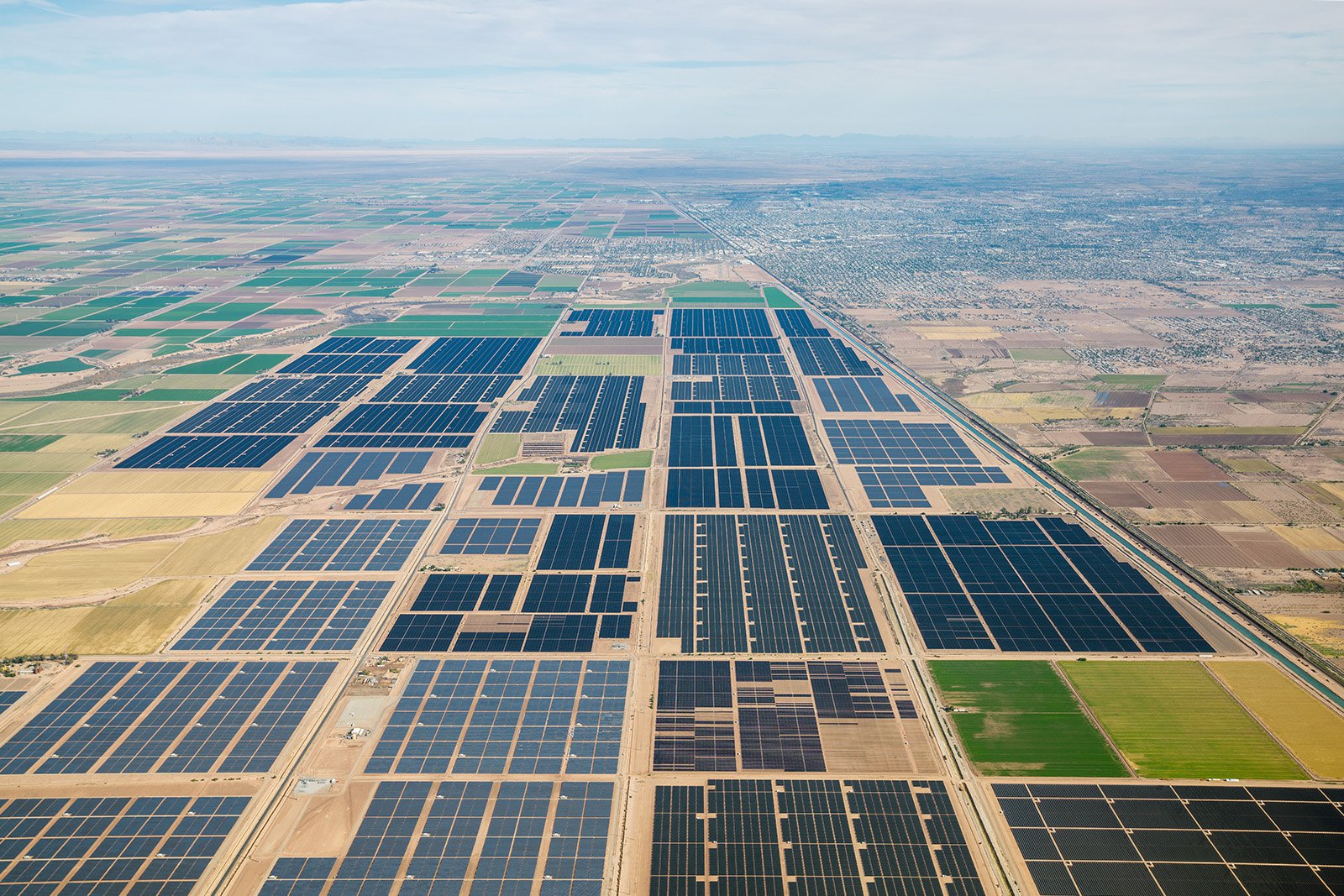
In December 2018, construction began on the Mount Signal 2 solar power station in Calexico, California. Swinerton Renewable Energy, New Energy Solar (NEW), and D. E. Shaw Renewable Investments (DESRI) gathered to break ground on Mount Signal 2, a 200MWdc photovoltaic solar project in Southern California’s Imperial Valley. NEW brought Swinerton aboard as its engineering, procurement & construction contractor. Swinerton brought West Coast Aerial Photography, Inc. aboard to document the entire one-year process of this large-scale solar farm, as documentation via aerial photography has become common with most of Swinerton’s ground-mounted solar installations. These aerial images provide a unique perspective on how the construction of solar farms takes place.
Aerial Photography at Mount Signal 2 Solar Farm
Aerial photography is exactly what it sounds like—photographs taken from the air. This type of photography can be taken from hundreds to thousands of feet in the air, depending on the size of the area you want to capture. Utility-scale solar farms like Mount Signal 2 span vast distances and require larger manned aircraft like airplanes, which allow photographers to capture aerial photos from multiple angles, giving an unparalleled view of the entire project.
At Mount Signal 2, aerial photographs were utilized to document every aspect of the large-scale solar project construction. The photographs provide valuable insights into how solar farms are being constructed, allowing developers to maximize efficiency and optimize energy output with the photovoltaic cells. Additionally, photographs show various stages in the construction process so the construction teams can get a better understanding of the progress as such large solar projects come together.
Aerial photography also provides an easy way for construction companies to showcase their work during the various stages of development. This type of visual documentation gives customers and the partnering utility company an up-close look at the construction workmanship and the ability to visually track the progress of large, utility-scale solar systems from start to finish.
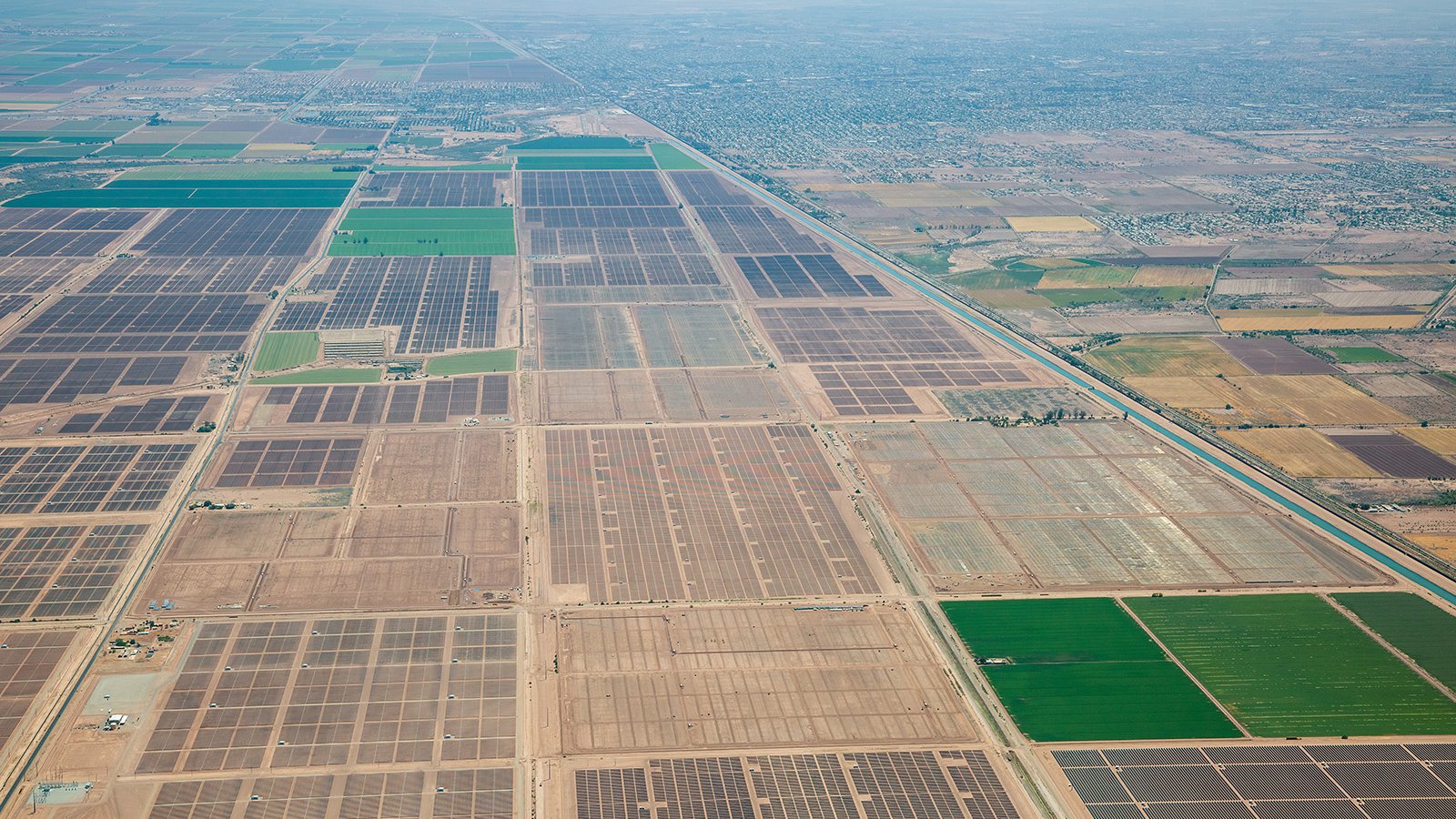
Looking down on the Mount Signal 2 Solar Farm from above. This large-scale project is a key part of California's plan to increase its use of renewable energy.
Solar Farm Construction Overview
The Mount Signal 2 Solar Farm is a 200MWdc photovoltaic project located 6 miles west of Calexico in Imperial County, California, constructed on 1,200 acres. The construction process was divided into three distinct phases; the first phase was focused on on-site preparation, followed by installation of the photovoltaic panels and, finally, connecting to solar equipment the electricity grid.
Tying into the San Diego Gas and Electric high-voltage power lines, Mount Signal 2 is expected to supply energy to power approximately 70,000 homes served by Southern California Edison. This solar power station has been documented regularly to capture construction progress from beginning through completion. The specifics will vary depending on the size and complexity of the solar farm, but generally, starting a solar farm requires the following steps:
How to Build a Solar Farm in Six Easy Steps
1. Site Preparation
The area where the solar farm will be installed must be cleared and leveled for solar module installation. This may involve removing trees or other vegetation, grading, and adjusting the soil as needed, to prepare the site for the solar panel racks.
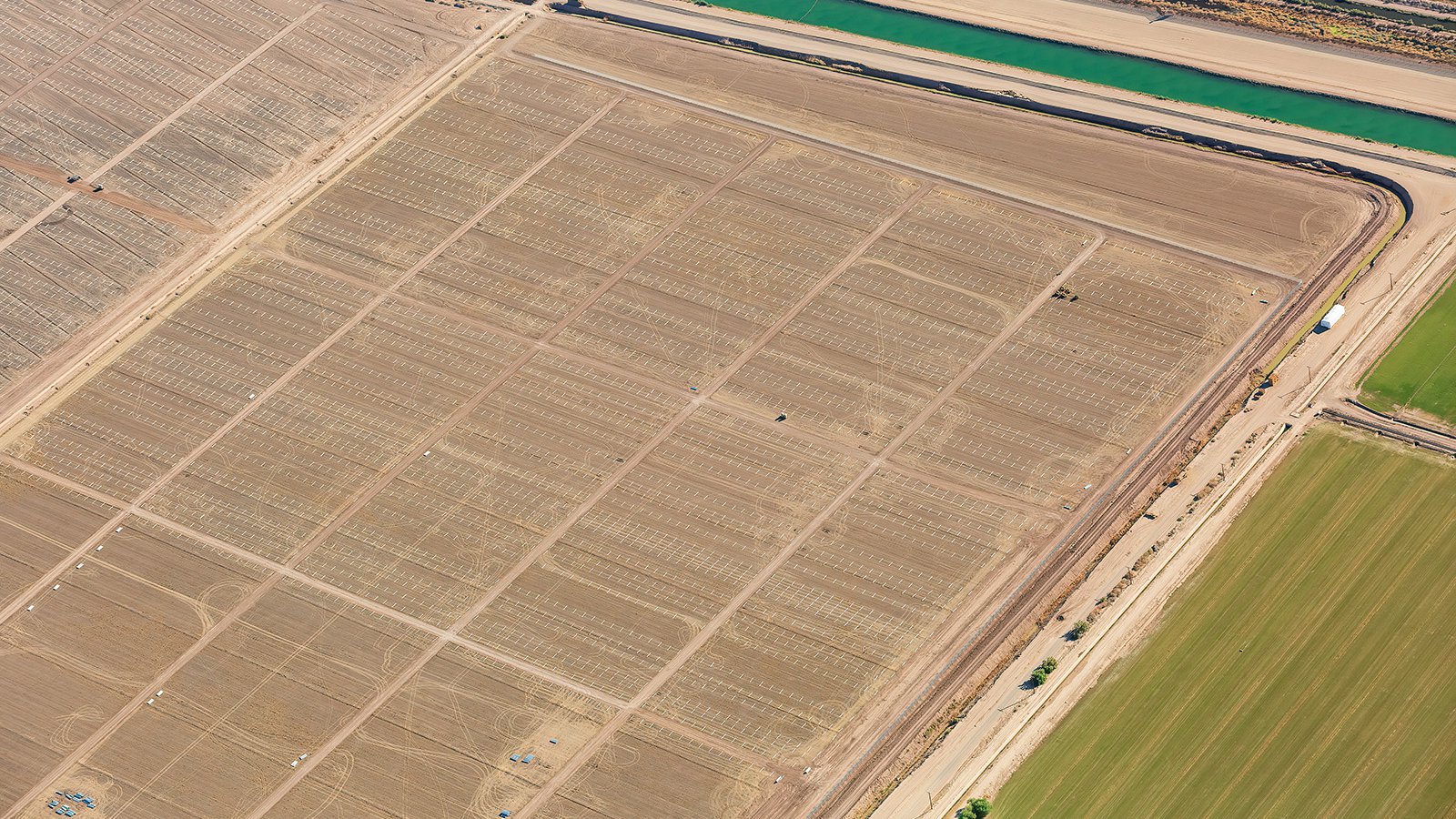
Workers prepare a section of the Mount Signal 2 Solar Farm. The project is expected to generate enough renewable energy to power over 70,000 homes.
2. Installation of Panel Racks
Panel racks need to be installed to support the solar panels. These racks will be securely attached to the ground and made from corrosion-resistant materials that can withstand the extreme weather conditions of California's Imperial County.
3. Wiring and Connections
Electrical wiring needs to be run from the individual panels in the solar array to a transformer or power grid connection point, which allows the power produced to end up at a centralized power source to be used by the surrounding community.
4. Installation of Panels
Once the panel racks are in place and the wiring and connections are completed, the solar panels can be installed. This process usually involves bolting each panel into its designated spot on the rack before connecting it to the wiring system.
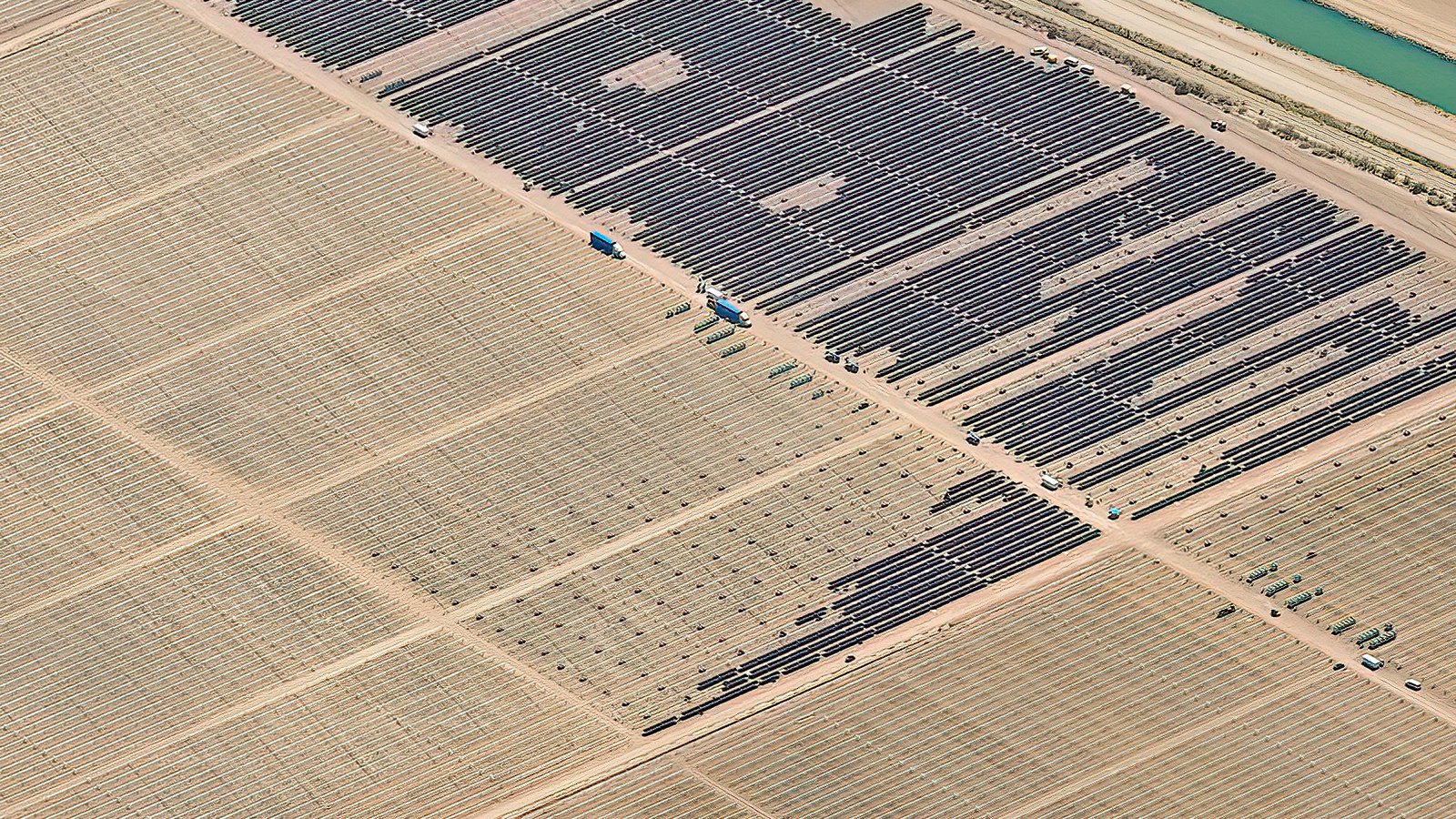
A close-up aerial view of the Mount Signal 2 Solar Farm under construction in Calexico, California. This project was completed in 2019.
5. System Testing
Before being put into service, the solar farm is thoroughly tested for safety and performance. This includes checking all wiring connections, ensuring proper voltage levels, and inspecting each panel for any potential defects. Any defects will prevent a solar panel's ability to absorb energy from the sun, which ultimately impacts how much electricity the solar farm produces.
6. Connection to the Grid
Once the construction of the solar farm is finished, with all solar panels installed and properly tested, the final step is to connect it to the electric grid. This will allow the energy generated at the solar power station to be brought into the wholesale electricity market.
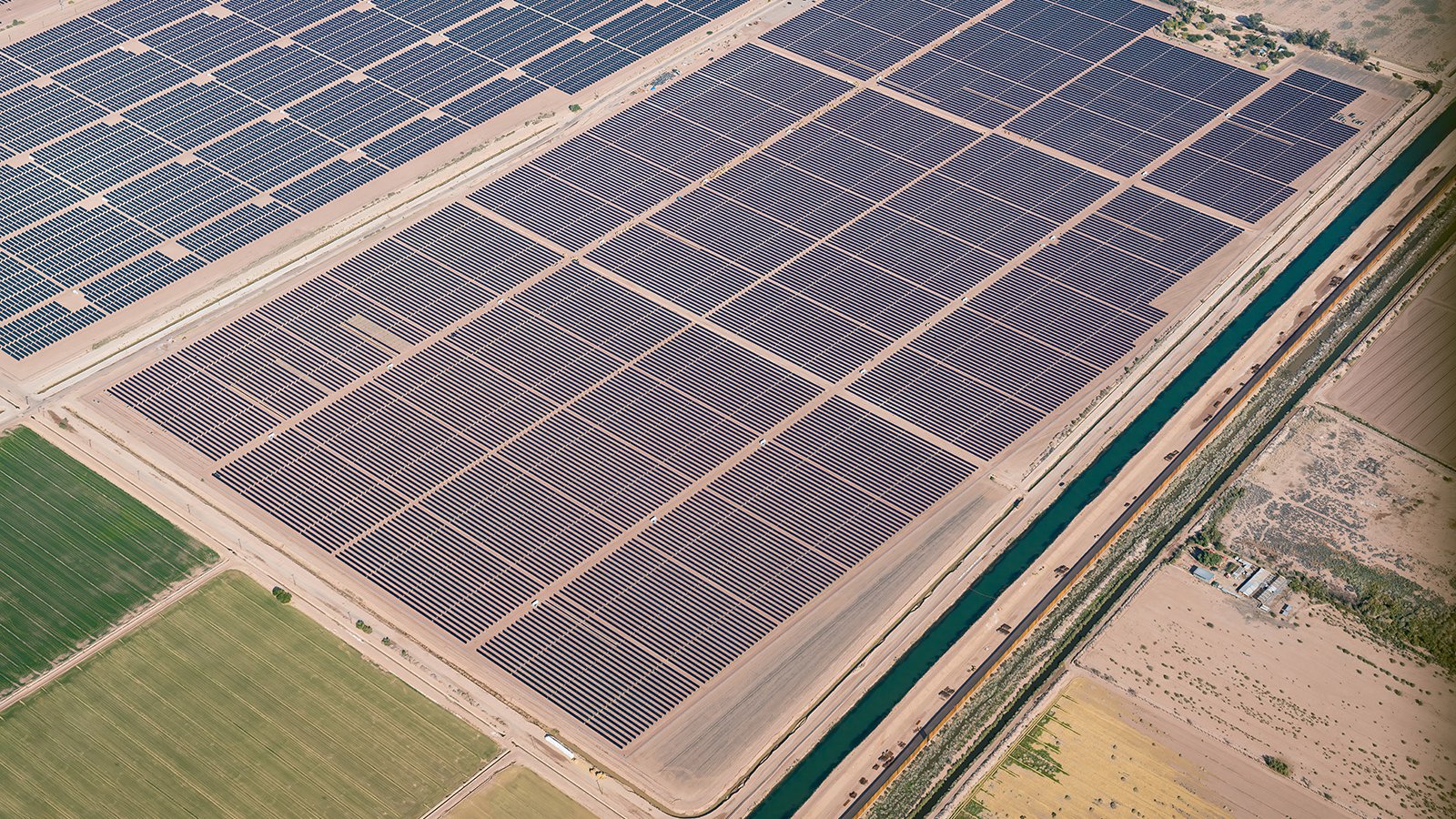
Aerial view of the completed Mount Signal 2 Solar Farm in operation in Imperial County, California.
To ensure optimal solar energy generation, solar power stations require on-going, regular maintenance, such as routine cleaning of electrical panels, inspecting wiring and connections for any signs of wear or damage, and replacing any defective parts or components.
Impacts on Local Community
The Mount Signal 2 solar project has had a positive impact on the local community in more ways than one; not only does it provide clean energy but has also created new jobs. Unemployment in Imperial County has historically been among the highest in the country, with current rates estimated at 17%. Over 200 people will be hired locally to work on-site throughout the construction of the Mount Signal 2 project, bringing much-needed jobs to the area. This solar project helped provide much-needed economic relief for many families in Calexico who are now employed at the solar farm or working as contractors for related services, such as maintenance or electrical work.

Aerial view of the Mount Signal 2 Solar Farm near completion in Calexico, California. The solar farm will create over 200 jobs for the local community.
The Benefits of Renewable Energy
Utility-scale solar farms like Mount Signal 2 not only provide clean energy for Californians but also create jobs for local workers who help to build and maintain them. Ultimately, renewable energy sources like solar farms represent a step forward toward creating more sustainable cities and communities across the United States and beyond.
Solar farm developers, as well as the solar industry as a whole, continue to innovate, making strides to deliver a future filled with sustainable solar generation, from both large-scale solar arrays to residential rooftop solar.
Mount Signal 2 is an impressive example of what can be achieved when innovation meets determination. Not only did this project create jobs within the local community but it also serves as an example of what can be accomplished by aerial photography when it comes to monitoring construction progress safely from afar while still ensuring quality results are delivered on time.
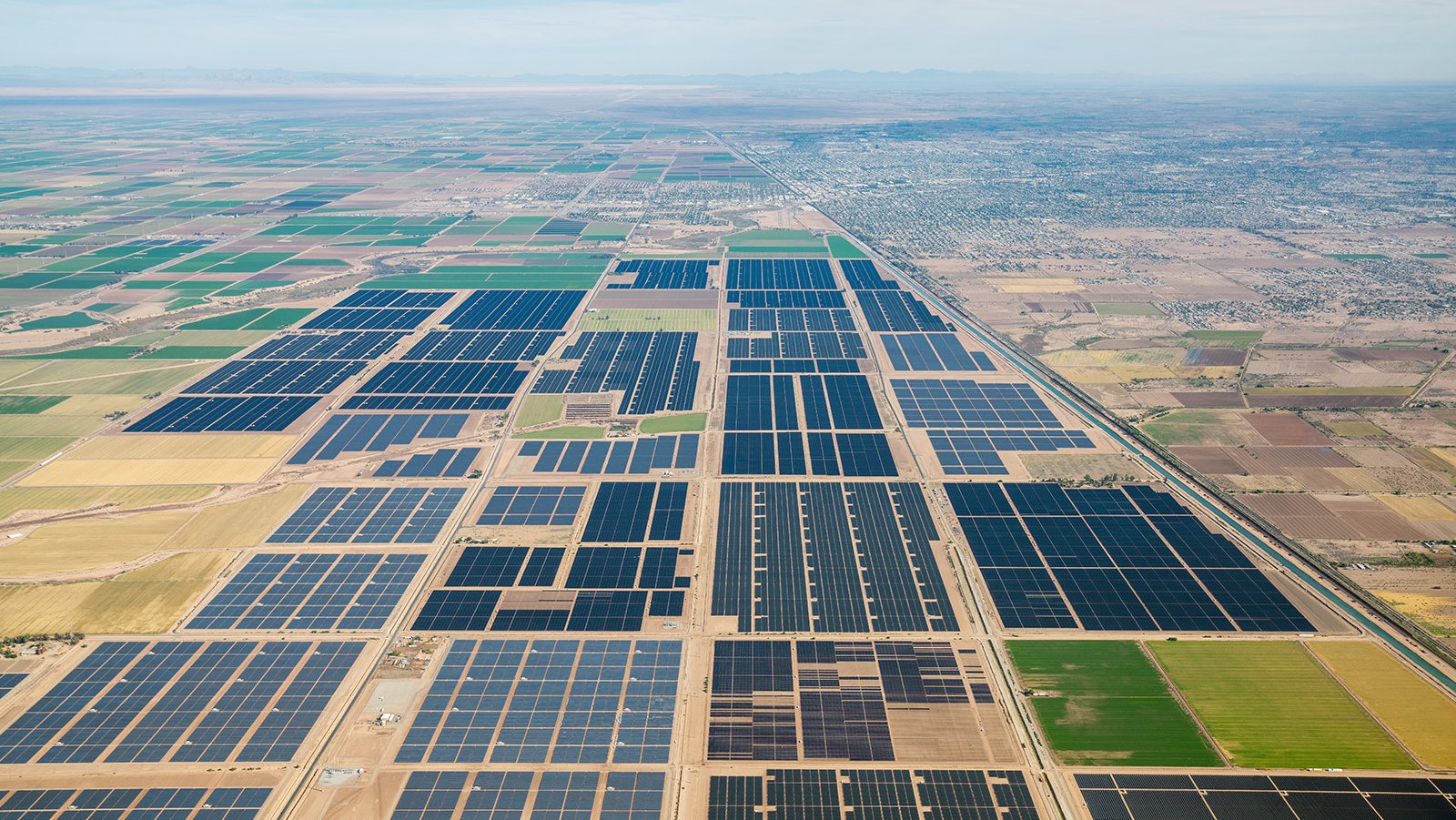
The Mount Signal 2 Solar Farm near Calexico, California is a vast and impressive sight. This aerial photograph shows the 200MWdc solar farm on 1,200 acres of land.